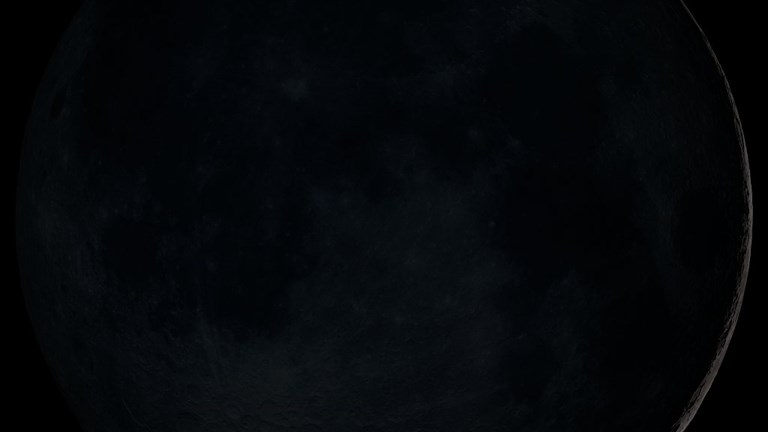
New Moon
The New Moon is visible in the daytime sky, but difficult to see (none of the lit side is facing us). The new moon is not visible in the night sky.
Observing the Moon is an excellent way to begin an interest in astronomy. The images below show what the Moon looks like in the different phases and indicates when it can be seen during the daytime and night time. The direction in which to look for the Moon is also indicated; the Moon rises in the east and sets in the west.

The New Moon is visible in the daytime sky, but difficult to see (none of the lit side is facing us). The new moon is not visible in the night sky.
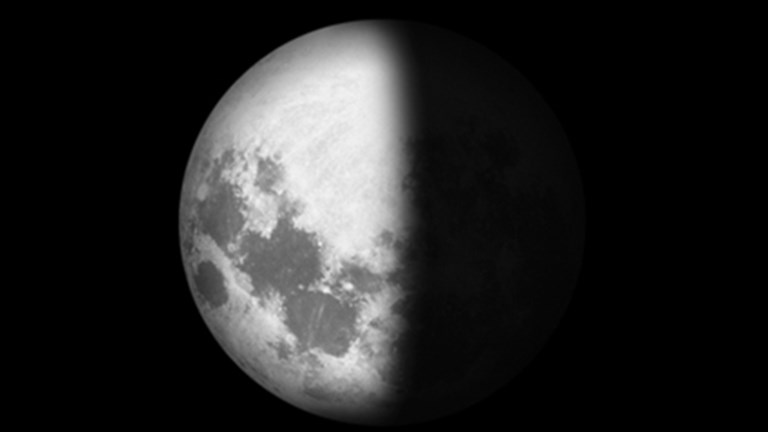
The First Quarter Moon is visible in the afternoon in the eastern sky and in the evening in the western sky.
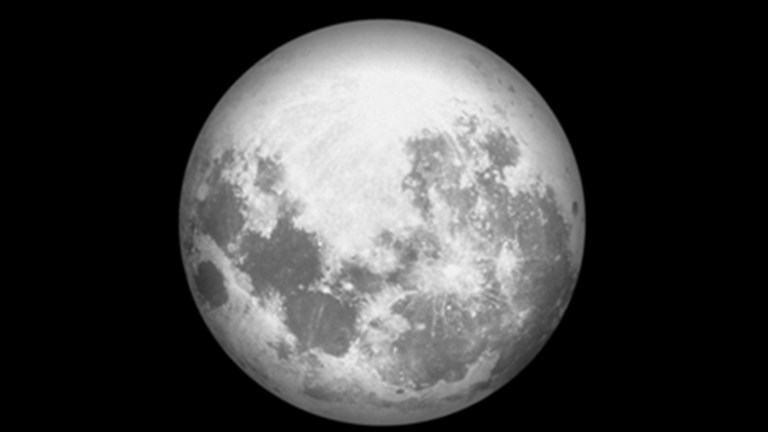
The Full Moon is not visible in the daytime sky. It appears in the east at sunset and is visible in the night sky.
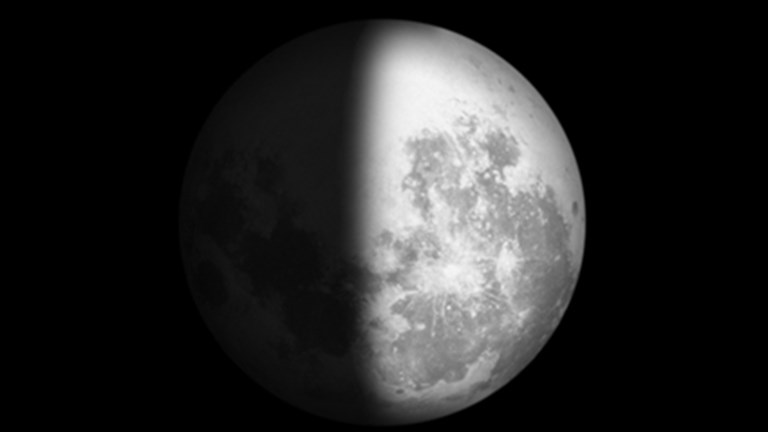
In the Last Quarter the Moon is visible in the early morning in the eastern sky and later in the morning in the western sky.
The current phase of the Moon for Australia can be found on many websites. A Moon calendar is available online from the Calendar- Australia website.
Ask the students to:
After reading the story, ask them to get into the same groups they were in for question one and ask the students to write down at least three more things they didn’t know about the Moon before the story was read to them and add these facts to the list they created in Question one.
Look for the Moon during the day and night. Write down the time that you see it. What part of the sky was the Moon in when you saw it? Is the location up high in the sky or low down?
In this project, you will be designing your own story book about the Moon. The book will be a creative story that another student, your age will enjoy. The book must also teach other students about the Moon.
Here are some questions that will start you thinking about your design:
Discuss what happens during the day and night with the students.
Ask the students to watch this video: Day and Night
Ask the students to complete the People Shadows activity below.
Our own shadows are created when our body blocks sunlight. Since the Sun appears to move across the sky during the day, our shadows change shape. The time of day when shadows are shortest is when the Sun is due north. Shadows of people almost disappear when the Sun is directly overhead – the only shadow is directly beneath them. In Melbourne the Sun is never directly overhead. The only areas of Australia that have the Sun directly overhead during the summer are north of the Tropic of Capricorn.
Always ensure that students are warned never to look directly at the Sun.
Coloured chalk
Discuss who is awake at night time? Are any animals awake at night time? What special features do these animals have to help them survive and be awake at night time? We call these animals nocturnal animals. Find out about three nocturnal animals. Using what you learned, design your own nocturnal animal and answer the following questions:
People have been seeing pictures in the sky for thousands of years. Astronomers now divide the sky into 88 constellations or sections. In each constellation (or part of the sky), the brightest stars stand out. When using your imaginations, bright stars can be joined together to form shapes or pictures, just like a dot-to-dot puzzle. The picture that is formed by the brightest stars becomes the name of the constellation. For example, the best known constellation in Australia is Crux or the Southern Cross. The bright stars in that area of sky form the shape of a cross. Crux is also the smallest constellation in the sky because it covers the least amount of sky.
Aboriginal groups all over Australia have a rich heritage of stories based on the stars and shapes in the sky that include emus, sharks, stingrays and fish. One story of the emu incorporates dark patches in the southern Milky Way from the Southern Cross to Scorpius. The Pointers are not part of the Southern Cross (Crux) constellation but belong to the constellation Centaurus (a mythical beast that is half man and half horse).
As a rule of thumb, the constellation of Orion can be seen during summer evenings and Scorpius during winter evenings. It is found low in the eastern sky in the evening from December, it sits overhead throughout February and becomes low in the western sky by April.
The constellation of Scorpius is visible low in the eastern sky in the evening from May, appears overhead during August and sinks low in the western sky by November.
The two constellations appear in opposite parts of the sky and at certain times one can be seen rising as the other one sets. One myth states that Orion was killed by the poisonous sting of the scorpion, which is why Orion now keeps out of Scorpius' way.
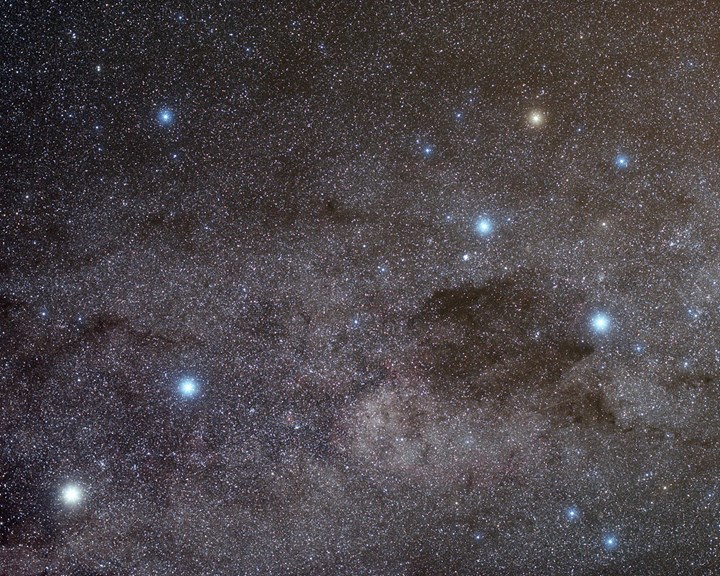
Museums Victoria acknowledges the Wurundjeri Woi Wurrung and Boon Wurrung Bunurong peoples of the eastern Kulin Nations where we work, and First Peoples across Victoria and Australia.
First Peoples are advised that this site may contain voices, images, and names of people now passed and content of cultural significance.